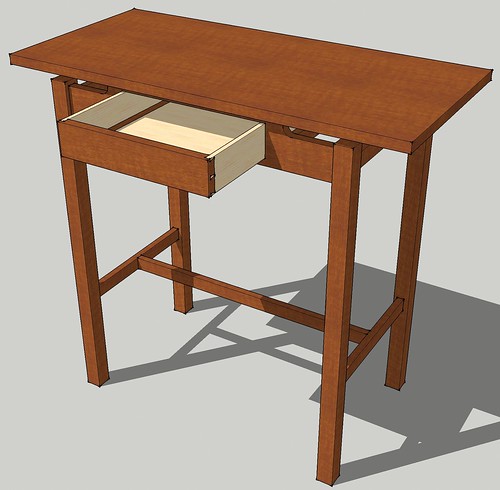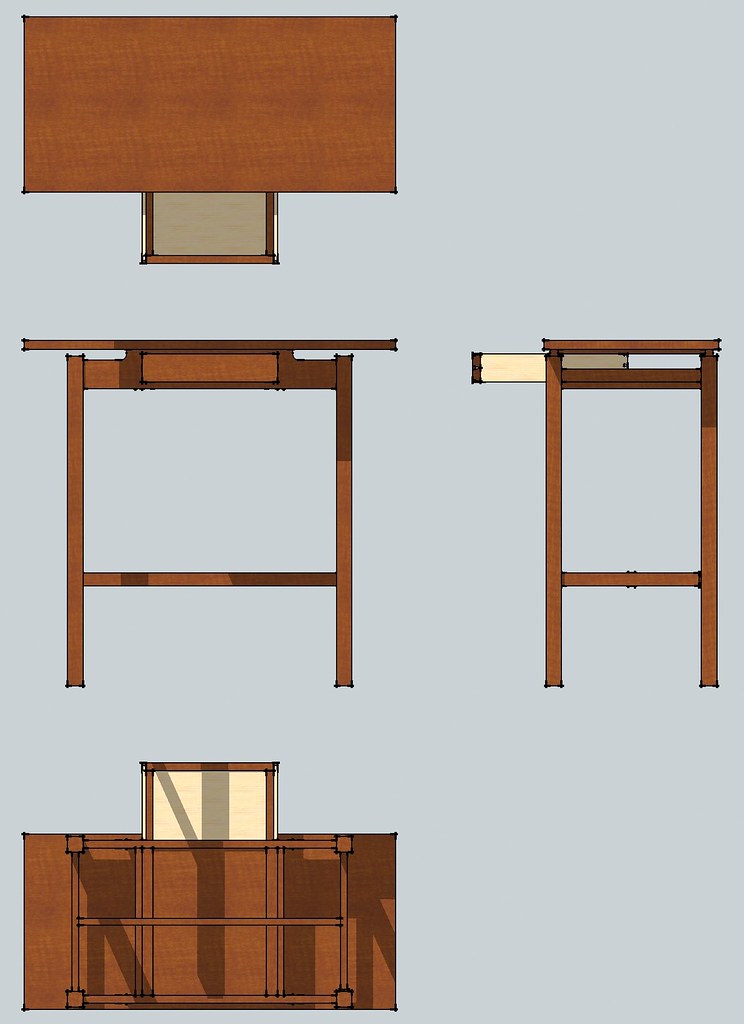Flip and Scale, -1 give the same results but I think Flip is easier. You don't need to be able to get at the appropriate scale handle to do it. I have also assigned keyboard shortcuts to the Flip commands so that's even easier.
Keep in mind for something like the legs on your table, you draw, say, the front left, copy it over to the right hand position with Move/Copy. Flip the right hand leg along
its red direction and then select both legs, copy them to the rear position and, while both copies are selected, flip them along the green direction.
To get a better idea of what's really happening, draw a diagonal line across the top of the leg to serve as a witness mark. If you draw that line between the two inside faces of the leg, when you get done copying and flipping, the witness marks should form a diamond.
Have you seen the video I did
here? You might find it helpful.
This one might be helpful as well.
As far as materials, I don't think I have anything real good but I'll take a look when I get time. One of the best sources I've found for woodgrain materials is
Herzog Veneers. If you click on the thumbnail for the species you're interested in, it'll take you to some samples. Click on one of them and you'll get long images of the planks. Sometimes you'll get images of more than one plank from the same log. There's a nice scale on the side to aid in scaling the images. You'll need to do some cropping and perhaps some straightening of the images before you can use them in SketchUp. Bring them in at their proper size--within a few inches or so. Then after you apply the material to the
faces in your model, you have the option to use various parts of image. Between that and choices between several planks of the same species, you should be able to do a nice job of applying materials so that you don't get repetition of recognizable features in the wood.
For more on applying materials, take a look at
this. I think I blew out my vuvuzela with that last one.

My partner on the Design. Click. Build. blog recently showed the way he handles materials. He says it works for him but for me, it isn't an efficient way to work and it eliminates a lot of the controls I have in applying and editing materials to make them look somewhat believable. His method involves making both horizontal and vertical versions of the material to compensate for applying them to the component rather than the faces of the component. Having essentially duplicates of the images for the materials increases the file size, too. But, his method is certainly an alternative.






